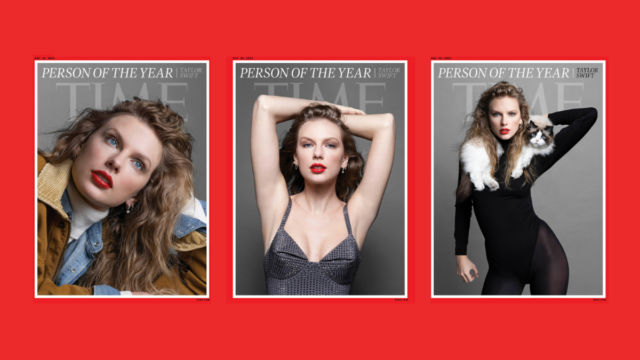Time Dropped Its Paywall One Year Ago. Here’s What’s Happened Since
Take your media strategy to the next level at Mediaweek. Cultivate new media partnerships and gain tools to standout across platforms from experts at Youtube, Peloton, LTK and more. View agenda.
The legacy publisher Time dropped its paywall last June, making it one of only a handful of news organizations—alongside Quartz and TechCrunch—to raise and later remove a paywall.
Since then, Time has seen advertising revenues rise, digital subscribers evaporate, and traffic remain relatively flat, according to data shared by Time and measurement firm Comscore.
A number of variables, beyond the removal of its paywall, play a role in explaining these changes. Traffic has declined across the industry, for instance, and Time has had more resources to devote to its advertising business.
“Removing the paywall was the right decision for our mission and purpose at Time,” said chief executive Jessica Sibley. “We also wanted to make a very big strategic change for our business, working with the biggest, best-in-class brands to support their businesses.”
The Time model cannot be easily replicated. It has the benefit of billionaire ownership, which provides a financial buffer few others enjoy. It also has more than a century of accrued brand equity, which has enabled it to branch into lines of business like events, franchises and awards, which draw much of their appeal from the authority of its logo.
But the decision nonetheless offers an insightful case study for publishers across the industry, many of which are continuously weighing the value of their subscription product against the drag it creates on their advertising business, according to Felix Danczak, global head of marketing at subscription platform Zuora.
Few publishers would implement a paywall if they could achieve commercial stability without one. So if Time is able to do so—it is not currently profitable—its success could offer a blueprint for others looking to find sustainability without a digital subscription business.
Paywall drops, traffic remains
According to Time, the primary reason for lowering its paywall was to ensure that its reporting could be freely accessed, a core part of its editorial mission under Marc and Lynne Benioff.
Since then, traffic has remained largely unchanged. From April 2022 to March 2023, Time averaged 14.6 million monthly visitors to its site, according to Comscore. The outlet lifted its paywall in June 2023; from April 2023 to March 2024, it averaged 14.5 million monthly visitors.
Given the drop in traffic across the industry, Time might have experienced a steeper decline had it not removed its paywall. This year, many publishers would consider maintaining their historical readership figures a win.
“The timing of the paywall drop happened to correspond to industry-wide declines in traffic, which is one of those macro things you cannot control,” said Time chief operating officer Mark Howard. “Our decision has resonated with our partners, who work with us in multiple capacities and surfaces, not just the website.”
According to Danczak, these figures are to be expected. When a publisher implements a paywall, it can expect traffic to drop. But when it removes a paywall, its traffic could take years to rebound, as it takes time for consumers to realize that the publisher has made its content available.
According to Sibley, Time also made its decision because the subscription business was not working for it.
When it removed the paywall, the media publisher had roughly 55,000 paying digital subscribers to Time.com, which have since disappeared. (This is not inclusive of bundled subscribers or Apple News+ revenue.) It still has around 1.1 million paying print subscribers.
Time saw a bump in subscribers during the pandemic but ultimately made the decision to focus on working with advertisers rather than orient its business around consumer revenue. Concerns over rising churn rates and worries about “peak subscription” further motivated the decision.
The publisher now characterizes itself as a business-to-business media company on the basis that its core clientele—advertisers—are businesses, according to Sibley. This positioning overlooks the fact that Time attracts a general-interest readership rather than a professional one. Still, it reflects the broader shift in strategy to which the publisher has pinned its fortunes.
Related video
Replacing subs with ads
By lowering its paywall and casting itself as a premium brand, Time has sought to expand its direct advertising and sponsorship business to such a degree that it compensates for the loss of its digital subscription business.
The company declined to offer financial specifics, such as the size of its overall revenue or its sunset subscription business; however, it did share that advertising revenue has risen 14% year over year.
Notably, removing the paywall would also allow for cost savings in that it would eliminate the need for certain consumer marketing roles. The publisher could realize these savings or shift affected staff to support its advertising business.
In general, according to Danczak, there are three reasons a publisher might take down its paywall: It has decided to focus on other means of monetization; its subscription business would never compensate for the decline in its advertising business; or it was looking to save money in the short term.
Time likely falls into the first category, according to Danczak. The company has developed a brand so recognizable that it believes it can achieve profitability by leveraging that equity into other ventures.
In particular, Time has marshaled its focus to promote its library of franchises, growing global events slate, new affiliate program and budding forays into connected television.
Given that the Time brand is its most valuable asset, increasing exposure to its content makes sense from a strategic perspective. However, whether that route will yield commercial stability remains an open question.
“If you see Time not as a publisher but as a brand, then the content side is merely its marketing arm,” Danczak said. “In which case, it should be free.”
https://www.adweek.com/media/time-paywall-dropped-one-year/
